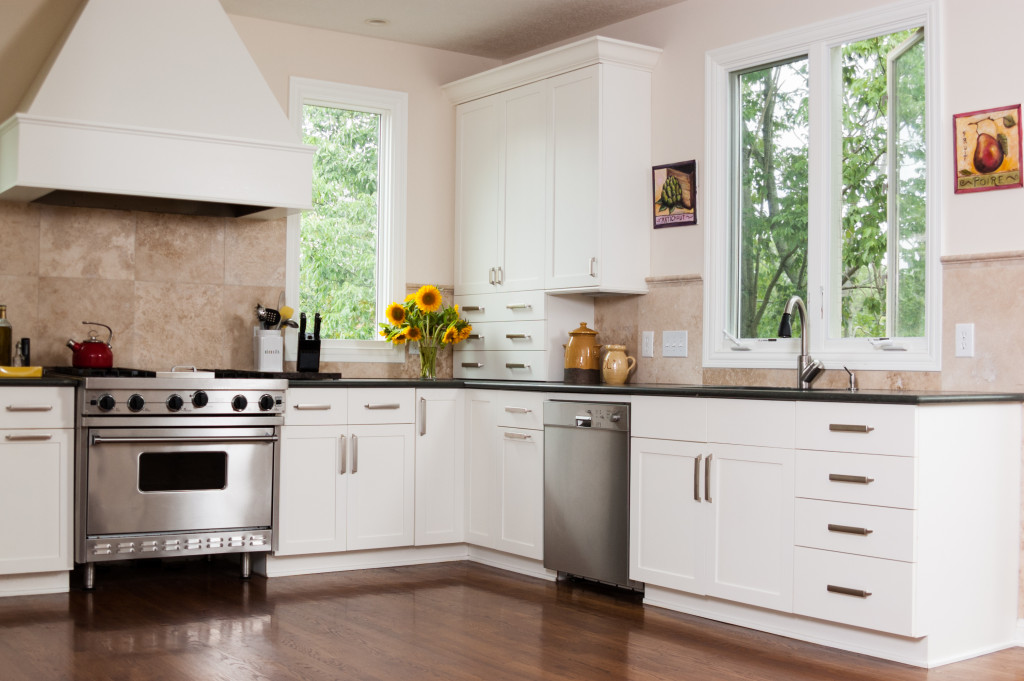Throughout time, our homes have evolved together with available technology. And however old or modern our homes are, they all have common features that came about from our common needs.
People in urban centers don’t have the same space as those who live in the suburbs. People working in information technology don’t have the same homes as those who are in the field of medicine. People’s lifestyles and preferences are also different. The Bohemian lifestyle, the minimalist lifestyle, and even the vegan lifestyle have all influenced home designs. But everyone eats and sleeps. Thus, all homes have bedrooms and kitchen, however different they are in size and design.
As our society is faced with new situations, we have evolved new common features in our homes. The changes brought about by trends come and go. But these features borne out of necessity would be impacting our homes for a longer time.
Sanitation Nooks
Because of the recent Covid-19 pandemic, people have become more particular with sanitation and cleanliness before entering the house.
What had only been a coat hanger and a utility box cum chair in the entryway has become an elaborate disinfecting area for many homes. Those who could afford even installed fever detectors. In some houses, instead of having the classic wooden floors at their entryways, they have shifted to bricks, exposed concrete, or tiles that can be made spotless by power washing.
In line with this, some household items have also changed a bit. For example, the old pump soap dispensers have been replaced with sensor-activated dispensers or manual dispensers triggered by the foot. Everything sensor-activated is preferred to lessen the need to touch anything.
The consumption of anti-bacterial products has increased. This bacteria-wariness could extend beyond the pandemic as we never know what kind of disease could wreak havoc in our lives again.
Multifunction spaces
Even before the work from home arrangements, multifunction spaces had already been trending because of the shrinking sizes of homes in metropolises. The kitchen islands have transformed into dining areas, and living rooms accommodated treadmills and pilates balls. Built-in cabinets were utilized to make the space more flexible. Exercise gears, for example, could be easily hidden away when entertaining guests. There are also stow-away dining tables that transform into shelves when folded against the wall.
In small flats and open space apartments, foldable beds and removable partitions are regular features. In micro-apartments, kitchens could be hidden out of sight by installing the sink and stove inside a cabinet.
The need for room flexibility increased with the lockdowns, especially in homes with different age groups. Children had to take home their school work, and the adults brought home their work. Add to these the varied interests and hobbies of the family members. Some families live in spacious houses, but many occupy smaller spaces. Now, everyone has to be in the same space at the same time doing different things.
Because of the popularity of multiple-use furniture and appliances, even those who have the resources to afford spacious homes have caught on to the trend for everything micro and used these features in luxurious RVs.
Home Office

Be it a small corner in the house or an entire room, working from home is a lot easier to do if there is a designated spot. Otherwise, there are too many distractions, and the brain can’t set itself in work mode.
Some homes already have studies or libraries, so it was just a matter of setting it up for full office work. Sales of printers, headsets, speakers, extended computer monitors, and other electronic gadgets have gone up in the first few months of the lockdowns.
The impact of the work-from-home arrangement would have lasting effects on the office setup, even post-pandemic. Just before the health crisis struck, communal workspaces became a trend among companies to save on office space and resources. Now that we know remote work can be as efficient as having on-site operations, offices might be scaled down in the future. The investment in home office equipment will, therefore, continue to be of value.
It is interesting how, in a very short time, a lot of our living routines have changed. And with this, so did our homes. For sure, once we live through the pandemic, there will be changes again. But the ones we did now were based on the dangers of these volatile times. Home evolutions that happened are our adaptation to an unpredictable future.

